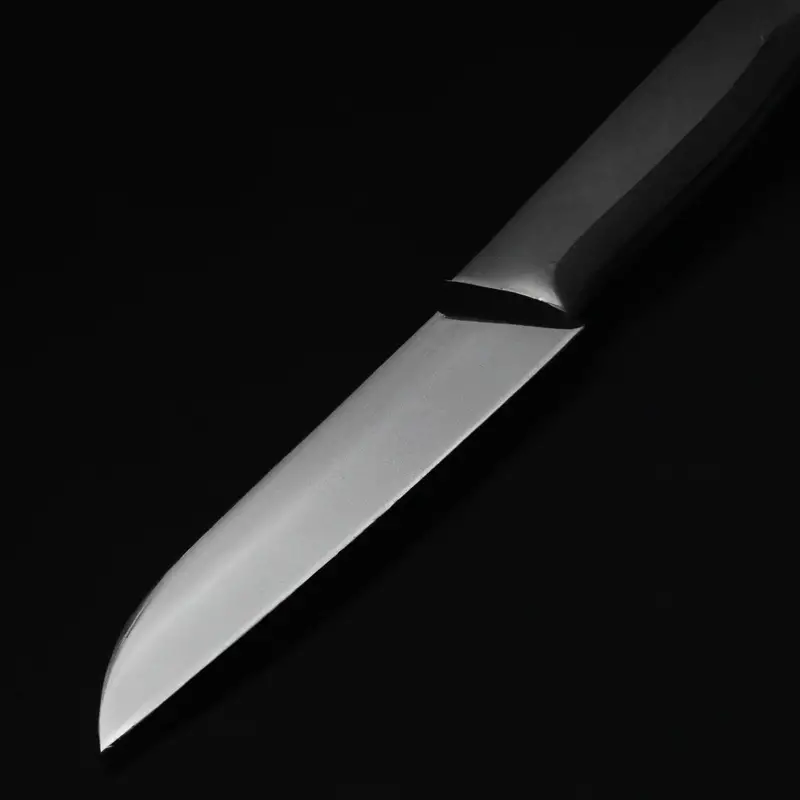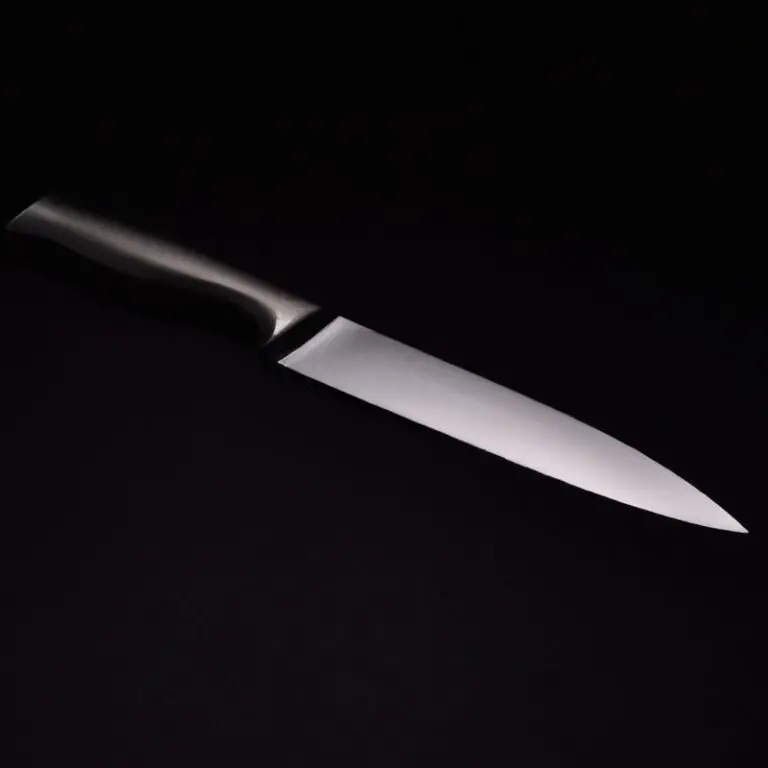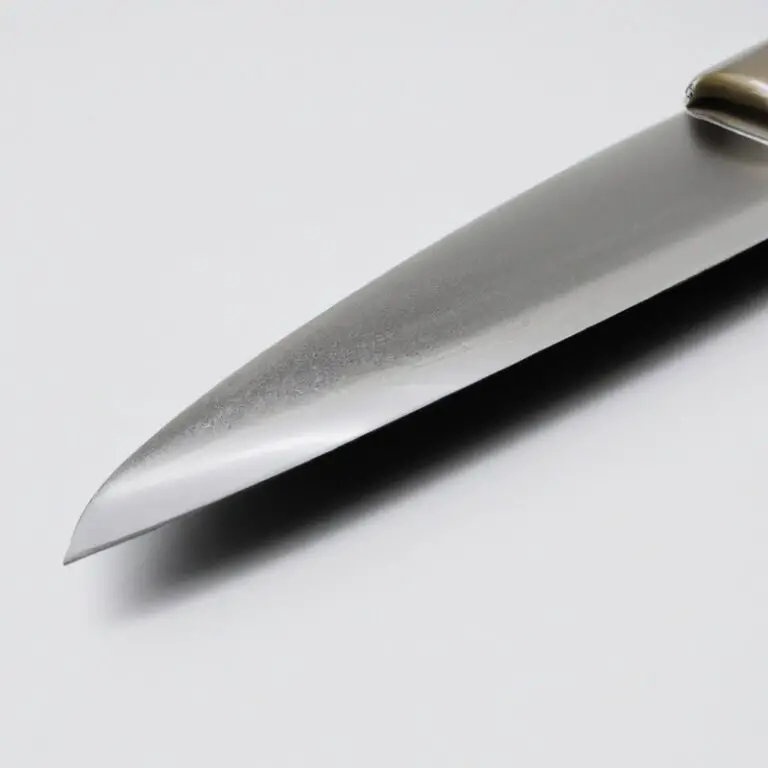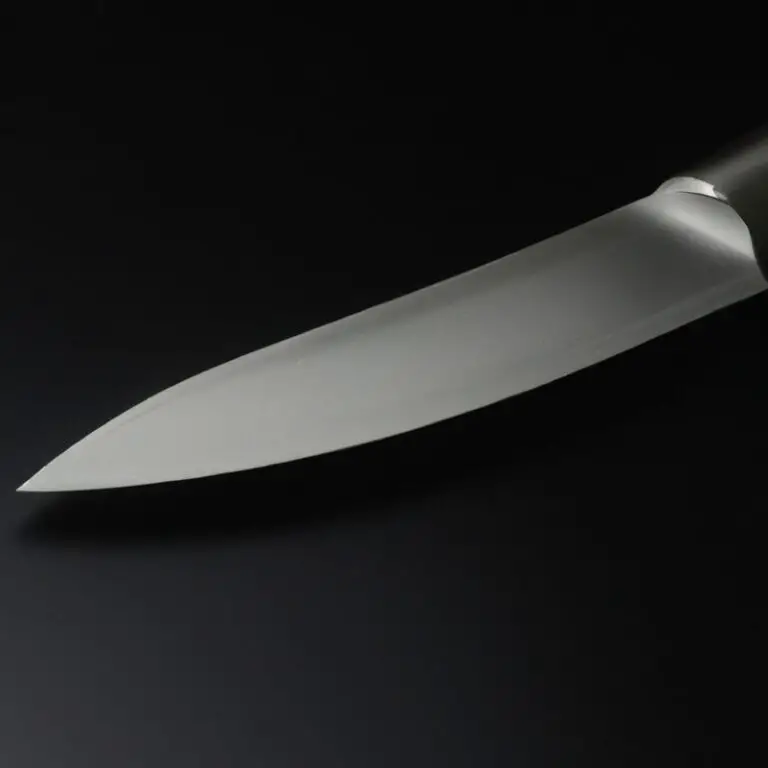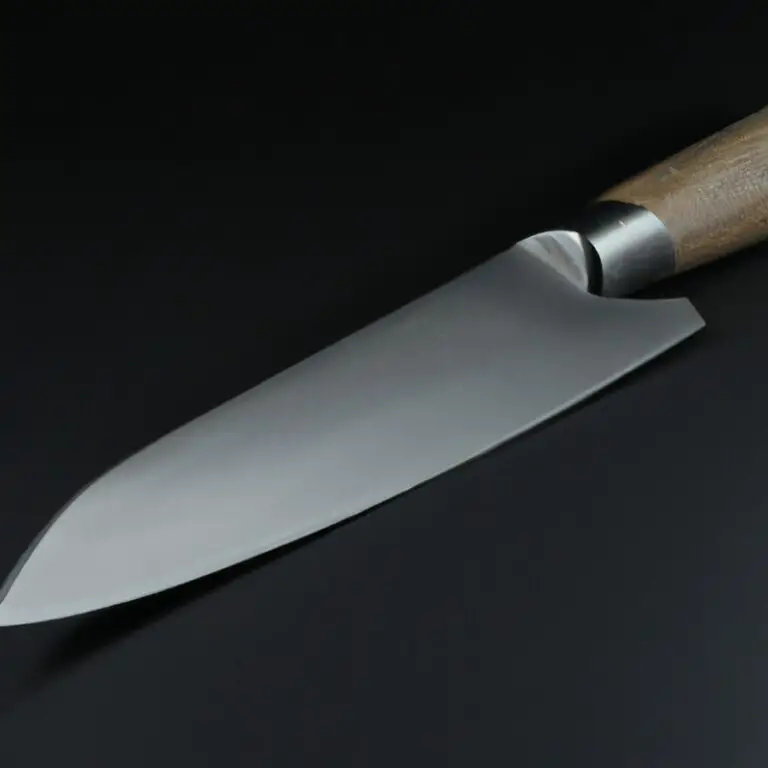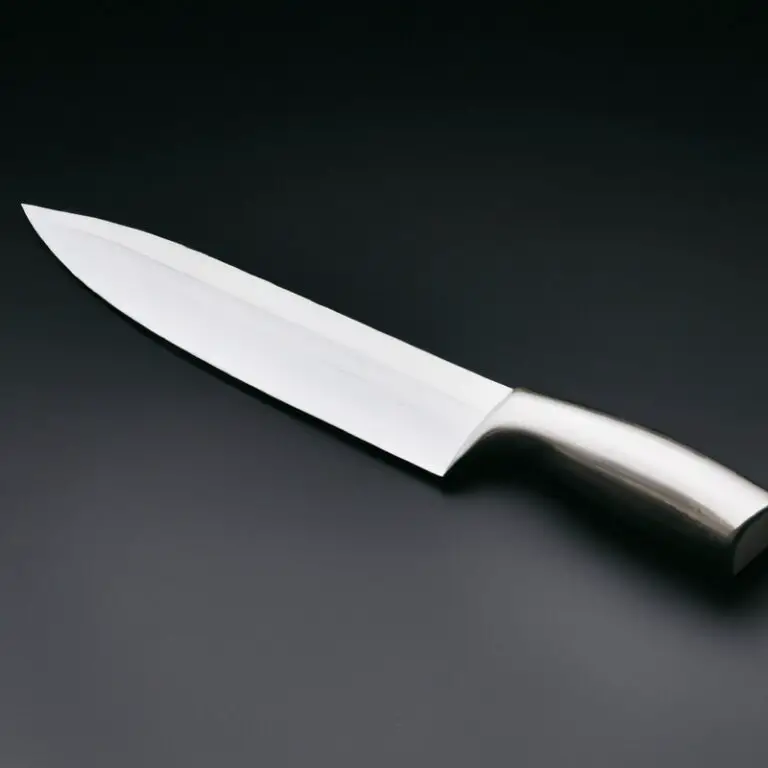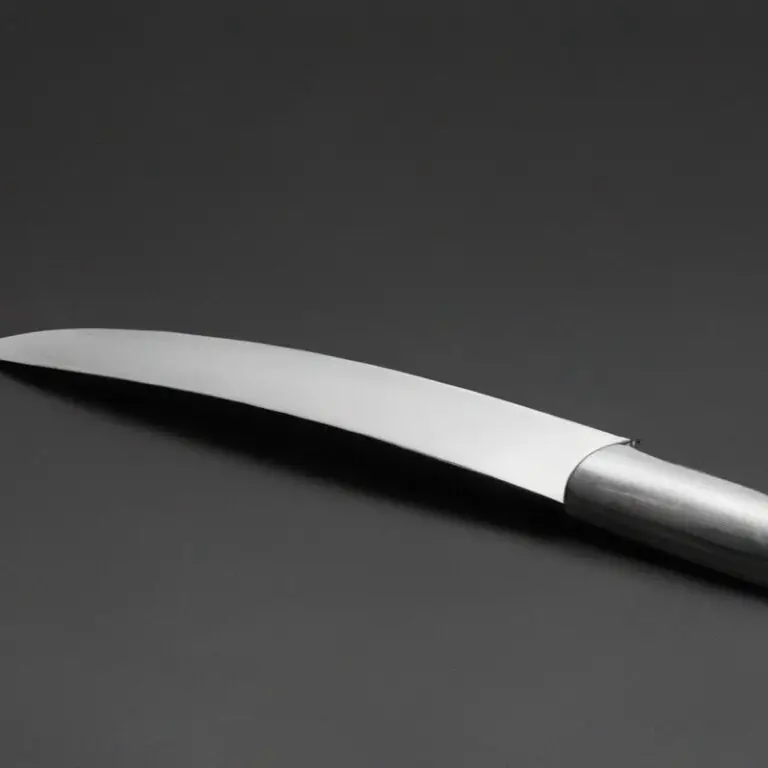Maximizing Kitchen Space With Santoku Knife Block Inserts – Efficiently Organize Your Knives!
Key Takeaways:
- Block inserts for Santoku knife storage can save valuable kitchen space.
- Maximizing kitchen space with block inserts allows for more efficient and organized cooking.
- Using block inserts for Santoku knife storage keeps sharp blades easily accessible and safe.
- Investing in block inserts for Santoku knives can lead to a more streamlined kitchen experience.
Are you tired of cluttered kitchen countertops and struggling to find the right knife? As a home cook, kitchen organization is paramount, and finding efficient storage solutions can make a world of difference.
In this article, we’ll explore the benefits of using a Santoku knife in the kitchen and the drawbacks of traditional knife storage methods.
We’ll delve into the world of block inserts, examining the various types available, their advantages and disadvantages, and how to select the right block insert to maximize your kitchen space and enhance your cooking experience. From design inspiration to maintenance tips, let’s explore the world of block inserts for Santoku knife storage.
| Knife Block Insert | Dimensions | Number of Knives | Material | Price |
|---|---|---|---|---|
| Bamboo In-Drawer Knife Block | 17″ x 5.5″ x 2″ | Up to 15 knives | Bamboo | $29.99 |
| Wusthof 17-Slot Knife Block | 10.5″ x 4.5″ x 8.5″ | Up to 17 knives | Wood | $49.99 |
| Rev-A-Shelf Knife Block Insert | 18″ x 22″ x 2.38″ | Up to 19 knives | Maple hardwood | $120.99 |
| In-Drawer Knife Block with Cork Bottom | 17″ x 5.5″ x 2″ | Up to 15 knives | Hardwood with cork bottom | $39.95 |
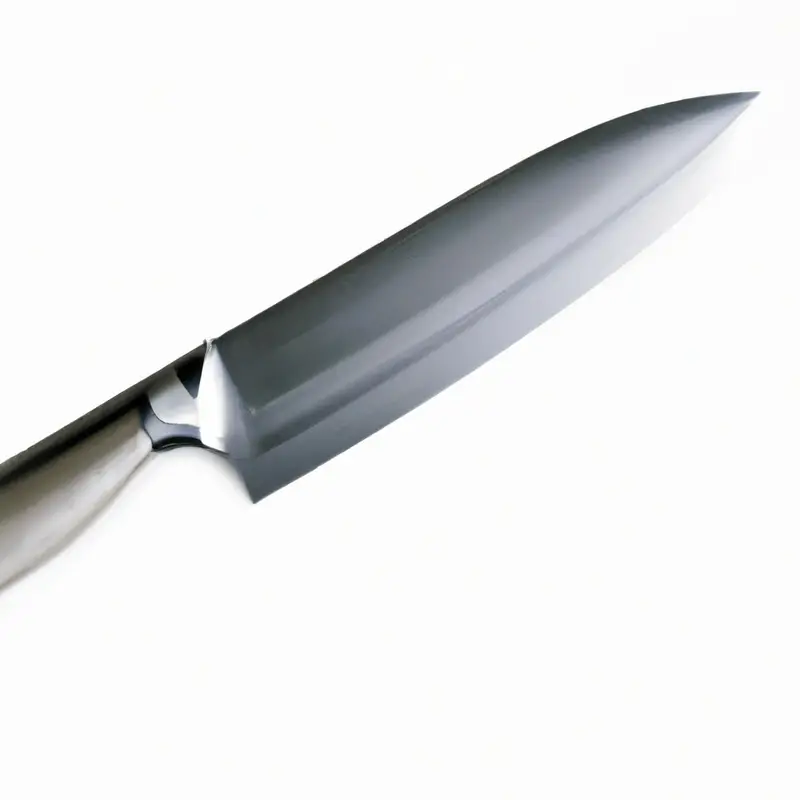
Understanding the importance of kitchen organization for home cooks
A well-organized kitchen can make meal preparation more comfortable, safer, and less time-consuming for home cooks. Having a place for everything ensures that everything is in its place, making it easier to find and access the necessary tools and ingredients.
It also helps reduce clutter and provides more functional space in the kitchen.
A disorganized kitchen, on the other hand, can cause confusion, waste time, and lead to unsafe practices. Therefore, to become more efficient, effective, and creative in the kitchen, it is essential to prioritize organization and keep things tidy and accessible.
The benefits of using a Santoku knife in the kitchen
Santoku knives have become increasingly popular in the kitchen due to their versatility and efficiency. Unlike traditional Western-style knives, Santoku knives are lighter and have a thinner blade, making them easier to maneuver and allowing for more precise cuts.
The benefits of using a Santoku knife include:
- Versatility: Santoku knives are suitable for cutting, slicing, and chopping vegetables, fruits, meats, and fish. Their flat edge is ideal for creating a straight cut, while the curved tip can be used for delicate precision work.
- Efficiency: The thin blade of a Santoku knife reduces resistance while cutting, allowing for clean, effortless cuts that don’t damage the food’s texture.
- Comfort: The lightweight design and ergonomic handle of a Santoku knife make it comfortable to hold and use for extended periods, reducing hand fatigue and strain.
- Safety: Santoku knives often have a granton edge, a series of small divots along the blade’s side that prevent ingredients from sticking to the knife, reducing the risk of slips or cuts.
Overall, a Santoku knife is a versatile and efficient addition to any kitchen, making food preparation easier, faster, and more enjoyable.
The drawbacks of traditional knife storage methods
Traditional knife storage methods, such as knife blocks, drawers, and magnetic strips, have several significant drawbacks that can compromise the safety of your knives and the efficiency of your kitchen.
- Dullness: Traditional storage methods often damage the edges of your knives, leading to dullness and loss of sharpness.
- Clutter: Traditional storage methods can take up a lot of counter or drawer space, creating clutter and reducing your workspace.
- Safety: Traditional storage methods often expose knives to air, moisture, and other elements that can cause rust and deterioration, making them unsafe for use.
- Limited capacity: Traditional storage methods usually have limited capacity, which means that they can’t store all of your knives or accommodate larger knives.
- Difficult accessibility: Traditional storage methods can make it difficult to access knives, especially when they are stored in the back or bottom of a drawer or block.
- Risk of accidents: Traditional storage methods can also pose risks for accidents, such as accidentally cutting yourself when reaching for a knife in a crowded drawer or block.
These drawbacks can affect the efficiency and safety of your kitchen, and may even cause you to replace your knives more frequently. Therefore, it’s essential to explore other innovative and practical storage methods, such as block inserts.
Exploring the various types of block inserts available
When it comes to block inserts, there are several options available in the market. These include wood, bamboo, plastic, and acrylic.
Wooden block inserts are a popular option due to their durability and aesthetic appeal.
Bamboo block inserts are eco-friendly alternatives and are resistant to scratches. Plastic block inserts are lightweight and easy to clean.
Acrylic block inserts are modern and sleek in design.
Apart from the material, block inserts also vary in size and shape, with some accommodating a single knife and others holding numerous knives. It is essential to consider the number of knives you own and the space available in your kitchen when selecting a block insert.
One disadvantage of a block insert is that it occupies a significant amount of counter space, but it provides easy and convenient access to your knives when cooking.
Researching and considering the advantages and disadvantages of each type of block insert can help you make an informed decision when picking the best option for your kitchen organization needs.
Advantages and disadvantages of using a block insert for Santoku knife storage
Advantages and Disadvantages of Using a Block Insert for Santoku Knife Storage Block inserts offer several advantages for Santoku knife storage, including:
- Efficient use of space – Block inserts are compact and allow for easy storage of knives without taking up too much space.
- Easy accessibility – The design of block inserts makes it easy to access knives quickly, reducing the time spent searching for the right blade.
- Protection of the knives – Block inserts protect the knives from damage and keep them organized, ensuring a longer lifespan.
However, there are a few drawbacks to using block inserts, including:
- Limited capacity – Depending on the size of the block insert, the number of knives that can be stored may be limited.
- Potential for bacterial growth – If not cleaned and maintained properly, block inserts can be a breeding ground for bacteria, which can contaminate the knives.
- Cost – Block inserts can be expensive, especially those made from high-quality materials.
Despite these disadvantages, the benefits of using a block insert for Santoku knife storage generally outweigh the drawbacks, especially if proper cleaning and maintenance are observed.
How to select the right block insert for your kitchen space and cooking needs
When selecting a block insert for your kitchen space and cooking needs, consider the following factors:
- Size: Determine the size of the block insert that fits your kitchen countertop and the number of knives you want to store.
- Material: Look for block inserts made of durable and easy-to-clean materials such as bamboo or stainless steel.
- Slot sizes: Check if the block insert has slots of different sizes to accommodate various types of knives, including Santoku knives.
- Accessibility: Choose a block insert that makes it easy to access your knives for efficient meal preparation.
- Brand reputation: Stick with reputable brands that offer high-quality and long-lasting block inserts.
By considering these factors, you can choose a block insert that fits your kitchen space, compliments your cooking needs, and ensures your knives are organized and accessible.
Tips for organizing and maximizing kitchen space with block inserts
Here are some tips for utilizing block inserts in your kitchen for maximum organization and space-saving:
- Choose the size and shape of the block insert that best fits your available counter space and the number and size of your knives.
- Consider using magnetic strips in addition to block inserts for mounting on walls or under cabinets.
- Use multiple block inserts placed strategically around your kitchen to keep knives easily accessible and in designated spaces.
- Keep your block inserts clean and free of debris to avoid contamination and ensure long-lasting use.
- Use clear labels or dividers to differentiate between knives and prevent damage to the blade edges.
- Consider investing in custom-made block inserts for a more personalized and tailored kitchen storage solution.
- Take advantage of the unique designs and materials available with block inserts to add aesthetic appeal to your kitchen while staying organized.
Maintenance and cleaning of block inserts for long-lasting use
To ensure long-lasting use of block inserts for Santoku knife storage, regular maintenance and cleaning are crucial. Here are some tips to keep your block inserts clean and in excellent condition:
- Wipe down your block inserts regularly with a damp cloth to remove any dust or debris.
- Use a mild soap and warm water solution to clean stubborn stains or marks on the block insert.
- Once a week, use a sanitizing solution to kill bacteria and germs that may accumulate on the block insert.
- Allow the block insert to dry completely before placing your knives back in it.
- Avoid using harsh chemicals or abrasive cleaning materials that can damage the block insert’s surface.
- Occasionally, coat your block inserts with food-grade mineral oil to maintain its finish and prevent cracks.
By following these simple maintenance and cleaning tips, you can ensure the longevity of your block inserts and keep your Santoku knives safe and organized.
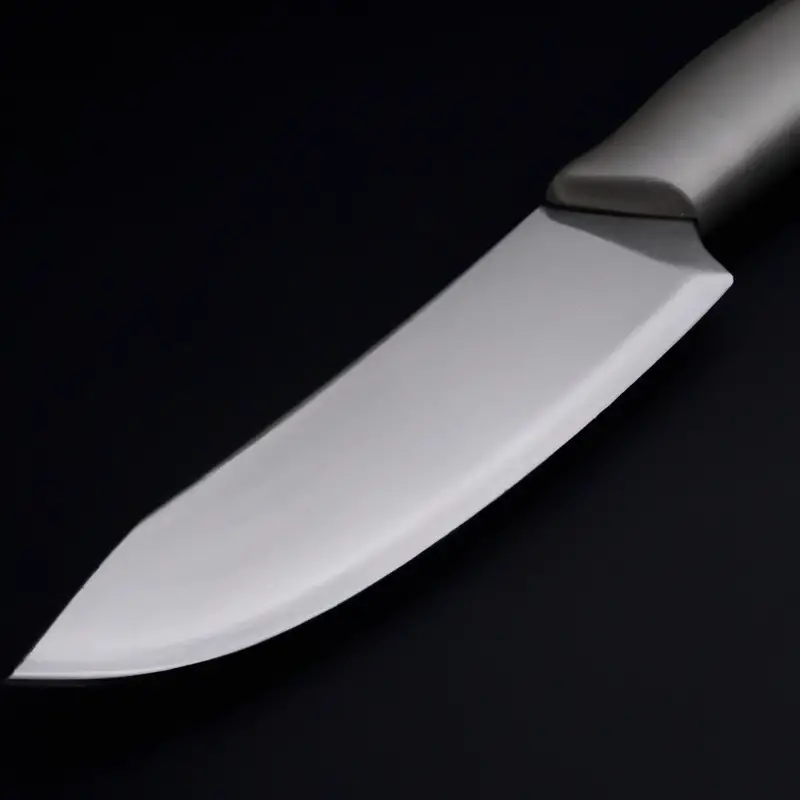
Comparing the cost-effectiveness of block inserts with other knife storage options
When it comes to knife storage options, cost-effectiveness is an important factor to consider. Block inserts are a more affordable option compared to traditional knife blocks or magnetic strips.
Additionally, block inserts are a one-time purchase that can last for years with proper maintenance, whereas other storage options may need to be replaced over time.
Another cost-effective advantage of using block inserts is their ability to save space in the kitchen. They are designed to fit into small areas in the kitchen, which reduces the need for additional storage solutions.
This can save money on storage items and help keep the kitchen organized.
Moreover, block inserts provide protection for your knives, thereby reducing the frequency of buying new knives. Other storage options such as magnetic strips do not offer protection for knives, which can result in damage to the cutting edge of the knives, making them blunt and less effective.
A blunt knife is less useful and more dangerous to use, meaning that replacing or sharpening the knife becomes more necessary over time, which can be costly.
Block inserts are a more cost-effective option compared to traditional knife storage methods. They are a one-time purchase and provide adequate protection for your knife, helping you save money on replacement knives and storage solutions over time.
Additionally, their ability to save space in the kitchen reduces the need for additional storage, further reducing cost.
The environmental impact of block inserts compared to traditional knife storage methods
Block inserts for knife storage can have a lower environmental impact compared to traditional storage methods. Block inserts are usually made of natural materials like bamboo or wood, which are renewable resources.
They also often have a longer lifespan than other storage options, reducing the frequency of replacements.
In contrast, traditional knife storage methods like magnetic strips or individual knife sleeves can be made of plastic or other non-biodegradable materials. Additionally, block inserts can help keep knives in good condition, reducing the need for frequent sharpening and extending their lifespan.
This can ultimately lead to less material waste and fewer emissions from manufacturing and transportation.
Overall, choosing a block insert for Santoku knife storage can be a more sustainable choice for your kitchen organization needs.
Inspiring design ideas for your kitchen using block inserts
Block inserts are a versatile kitchen tool that can not only store your knives but also add to the overall aesthetic of your kitchen space. Here are some inspiring design ideas to consider:
- Go for a minimalist look with a sleek wooden block insert that matches your kitchen cabinets.
- Incorporate metal block inserts into a modern industrial kitchen for a cohesive look.
- Choose a colorful block insert to add a pop of color and personality to your kitchen.
- Select a magnetic block insert to showcase your knife collection on a backsplash or open wall space.
- Opt for a custom-made block insert that fits perfectly into a unique kitchen layout.
Remember, the design possibilities are virtually endless with block inserts. Consider your personal style and kitchen layout when choosing which one will work best for your needs.
Final thoughts on the benefits of using block inserts for kitchen organization
Block inserts are an excellent solution for organizing kitchen space. They provide numerous benefits, including easy accessibility to knives and keeping them safe.
Additionally, block inserts keep knives in good condition as they prevent blades from touching each other or any other surface.
Block inserts don’t have to be dull and boring; they come in different designs to complement any kitchen style. Finally, block inserts are cost-effective and a more environmentally friendly option compared to traditional knife storage methods.
Overall, using block inserts for kitchen organization is a smart decision that will maximize your kitchen space, keep your knives safe, and add an aesthetic touch to your kitchen.
Final Verdict
Investing in a quality block insert for Santoku knife storage is an excellent way to maximize your kitchen space and keep your knives organized and accessible. By exploring the various types of block inserts available, selecting the right one for your space and cooking needs, and maintaining it properly, you can improve the efficiency and safety of your kitchen.
The cost-effectiveness and eco-friendly impact of block inserts further emphasize their value.
With practical tips for organizing your kitchen and inspiring design ideas, there’s no limit to what you can achieve with a block insert. Don’t settle for traditional knife storage methods that can be inconvenient and unsanitary.
Take the leap and experience the benefits of block inserts for yourself.

